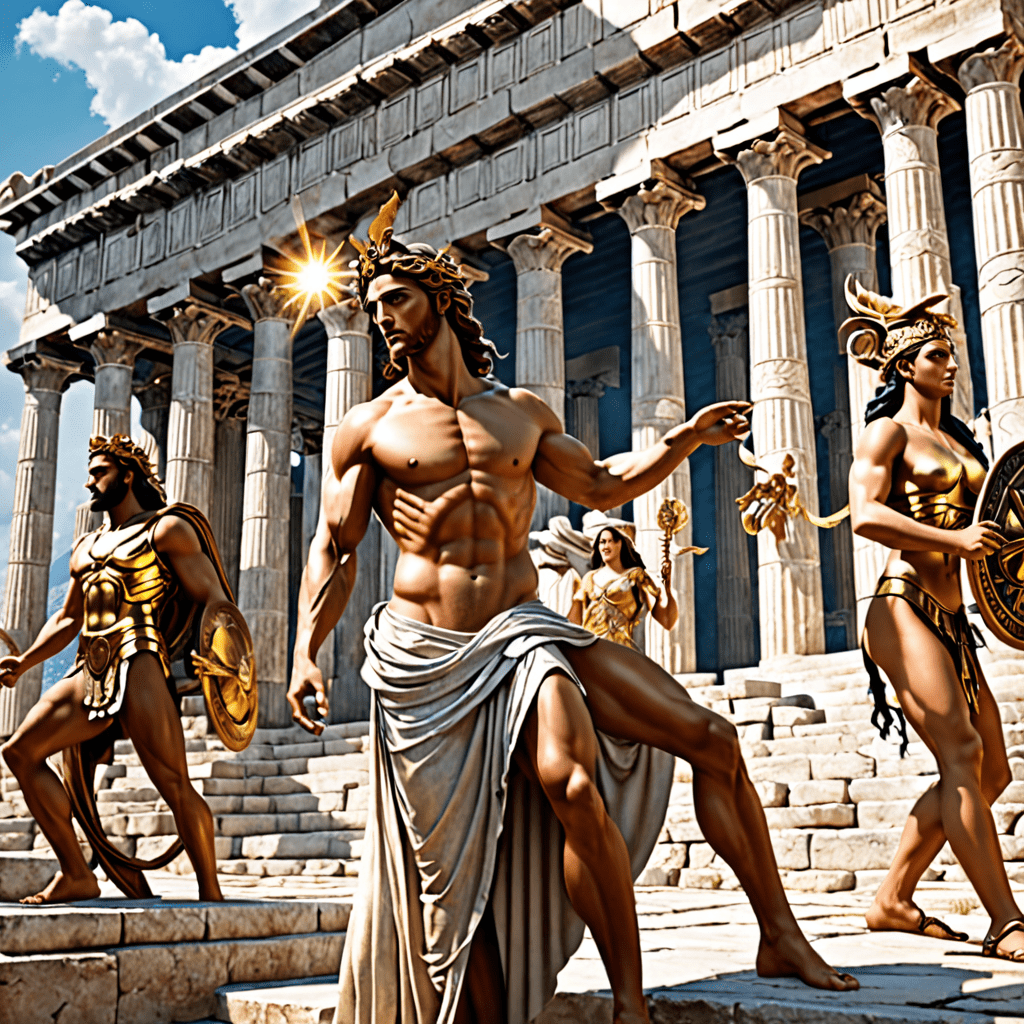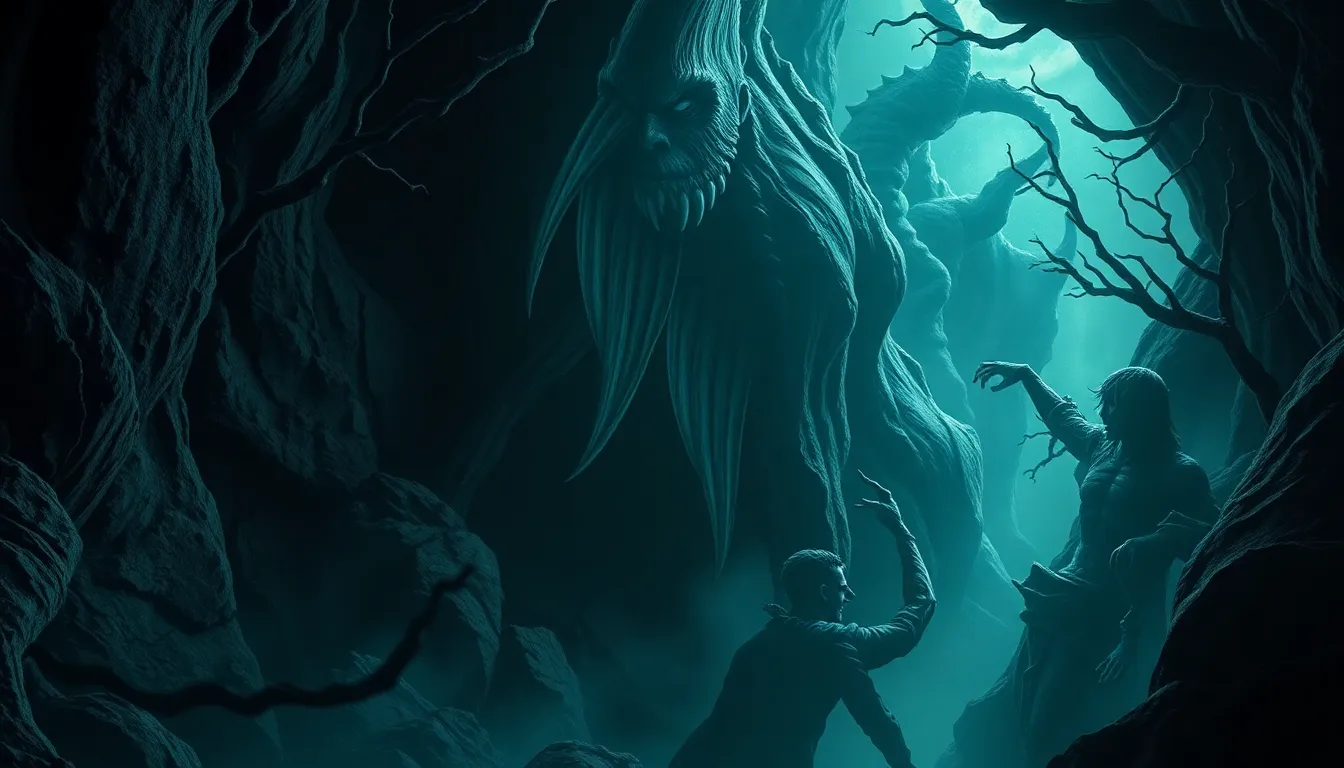Baltic Mythology: A Polytheistic Worldview
Baltic mythology, a rich tapestry of myths and legends, provides a unique perspective on the world, a worldview deeply rooted in nature and the cycles of life. Unlike the monotheistic religions that emerged later, Baltic mythology embraced a polytheistic worldview, recognizing a multitude of deities with distinct roles and responsibilities. These deities embodied the forces of nature, the elements, and the essence of human life itself. Each god and goddess held a specific domain, reflecting the intricate web of connections within the natural world—a world that was believed to be alive and pulsating with divine energy.
The Concept of Time in Baltic Mythology
In Baltic mythology, time is not a linear concept, but rather a cyclical and interconnected force. It is intrinsically linked to the rhythms of nature, a constant flow of seasons, tides, and celestial movements. Time is not merely measured in days, months, and years but is experienced as a continuous dance of creation, renewal, and decay. Time, in essence, is a manifestation of the divine will, a reflection of the eternal cycle of life, death, and rebirth. This cyclical view of time is woven into the very fabric of Baltic mythology, influencing their beliefs about the past, the present, and the future.
Cycles of Nature: The Foundation of Time
The concept of time in Baltic mythology finds its foundation in the cyclical nature of the universe. The revolving seasons, the changing phases of the moon, and the constant movement of the stars served as natural clocks, shaping their understanding of time. The annual cycle, from the icy grip of winter to the vibrant bloom of spring, played a central role in their beliefs and rituals. It was not merely a sequence of events, but a sacred journey, a reflection of the divine cycle of creation and re-creation. For the Balts, time was not merely a measure of duration but a manifestation of the divine will, a grand rhythm that guided the world and its inhabitants.
The Year as a Sacred Cycle: From Winter Solstice to Spring Equinox
The Balts revered the year as a sacred cycle, particularly recognizing the significance of the winter solstice, the shortest day of the year, and the spring equinox, when daylight and darkness are balanced. These celestial events held immense importance, marking the turning points in the natural world and signifying the renewal of life. The winter solstice, known as "Kūčios" or "Christmas Eve," was celebrated with rituals and feasts, honoring the return of the sun and the promise of a new beginning. The spring equinox, marked by the festival of "Velykos" or "Easter," ushered in a time of rebirth and growth, celebrating the awakening of nature and the triumph of life over death.
The Role of the Gods in Time and Destiny
The Baltic gods held significant influence over the course of time and the fate of humans. They were seen as active participants in the unfolding of events and their actions played a crucial role in shaping both individual and communal destinies. The gods were believed to be responsible for the ebb and flow of time, for the changing seasons, and for the prosperity or misfortune that befell individuals and communities.
The Divine Twins: Vytis and Lūksta: Guardians of Time and Fate
In Baltic mythology, time and fate were often intertwined, and the concept of destiny was deeply ingrained in their beliefs. Two prominent figures in this realm were the divine twins, Vytis and Lūksta. Vytis, often depicted as a warrior or knight, symbolized the cyclical nature of time, the ongoing flow of events, and the passage of seasons. Lūksta, his sister, represented fate and destiny. Together, they embodied the interconnectedness of time and fate, influencing the course of human life and influencing events in the world. The twins were seen as guardians of the natural order, ensuring that time unfolded as it should and that each individual experienced their predetermined destiny.
The World Tree: An Axis Mundi and Symbol of Eternity
The World Tree, known as "Pasaulio medis" in Baltic mythology, occupied a central space in their worldview, representing the axis mundi, the connection between the heavens, the earth, and the underworld. Its roots were believed to reach deep into the earth, while its branches stretched towards the celestial heavens. The World Tree, often portrayed as an oak or ash, was a symbol of eternity, a living embodiment of the enduring cycle of creation and renewal. The tree's presence marked the boundaries between different realms, serving as a bridge between the mortal and the divine.
The Afterlife: Souls and Spirits
Baltic mythology embraced the concept of an afterlife, although the details varied across different regions and traditions. The souls of the deceased were believed to dwell in the underworld, a realm connected to the earth through the roots of the World Tree. Their journey through the afterlife was guided by the god of the underworld, Velnias, also known as the Devil in later Christian syncretism. Souls were believed to be judged based on their actions during their mortal lives, leading to different fates in the afterlife. The spirits of ancestors were held in high esteem and played a vital role in the lives of the living, offering guidance, protection, and sometimes even intervention.
The Concept of Eternity in Baltic Mythology
The Balts believed in a cyclical concept of time, where creation, destruction, and regeneration were intertwined. While death was acknowledged, it was not seen as an absolute end. Instead, it was viewed as a transition, a passage into a different state of existence. The World Tree, as a symbol of eternity, represents the continuity of life, the interconnectedness of past, present, and future. The cyclical nature of time and the belief in the afterlife, along with the enduring symbol of the World Tree, all contribute to the concept of eternity in Baltic mythology. This belief in a cycle of life, death, and rebirth provides a powerful sense of continuity and connection across generations, linking the past, present, and future in an ongoing cycle of renewal.
The Significance of Time and Eternity for Baltic Culture
Time and eternity held profound significance for Baltic culture, shaping their worldview, rituals, and understanding of the natural world. The cyclical nature of time, with its emphasis on seasons and the annual cycle, influenced their agricultural practices, their festivals and celebrations, and their perception of the universe. The belief in the afterlife and the veneration of ancestors connected the living with the departed, providing a sense of continuity and a connection to the past. Baltic mythology provided a rich framework for understanding the human experience, offering explanations for the mysteries of life and death, and forging a deep connection with the natural world.
FAQ
1. What is Baltic mythology?
Baltic mythology is a collection of myths and legends that originated among the Baltic people, including the Latvians, Lithuanians, and Prussians. It is a polytheistic system of beliefs, with numerous deities representing the forces of nature and human life.
2. How does Baltic mythology view time?
Baltic mythology views time as a cyclical force, deeply connected to the rhythms of nature. The seasons, the phases of the moon, and the movement of the stars served as natural clocks, shaping their understanding of time.
3. What is the World Tree in Baltic mythology?
The World Tree, also known as “Pasaulio medis,” represents the axis mundi, connecting the heavens, the earth, and the underworld. It is a symbol of eternity, representing the continuity of life and the enduring cycle of creation and renewal.
4. How did the Balts view the afterlife?
The Balts believed in an afterlife where the souls of the deceased dwelled in the underworld, connected to the earth through the roots of the World Tree. The afterlife was guided by the god Velnias, and souls were judged based on their actions during their mortal lives.
5. What is the significance of time and eternity in Baltic culture?
Time and eternity played a crucial role in shaping Baltic culture, influencing their rituals, festivals, and understanding of the natural world. The cyclical nature of time connected them to the rhythms of nature, while the belief in an afterlife connected the living and the departed, providing a sense of continuity and connection across generations.



